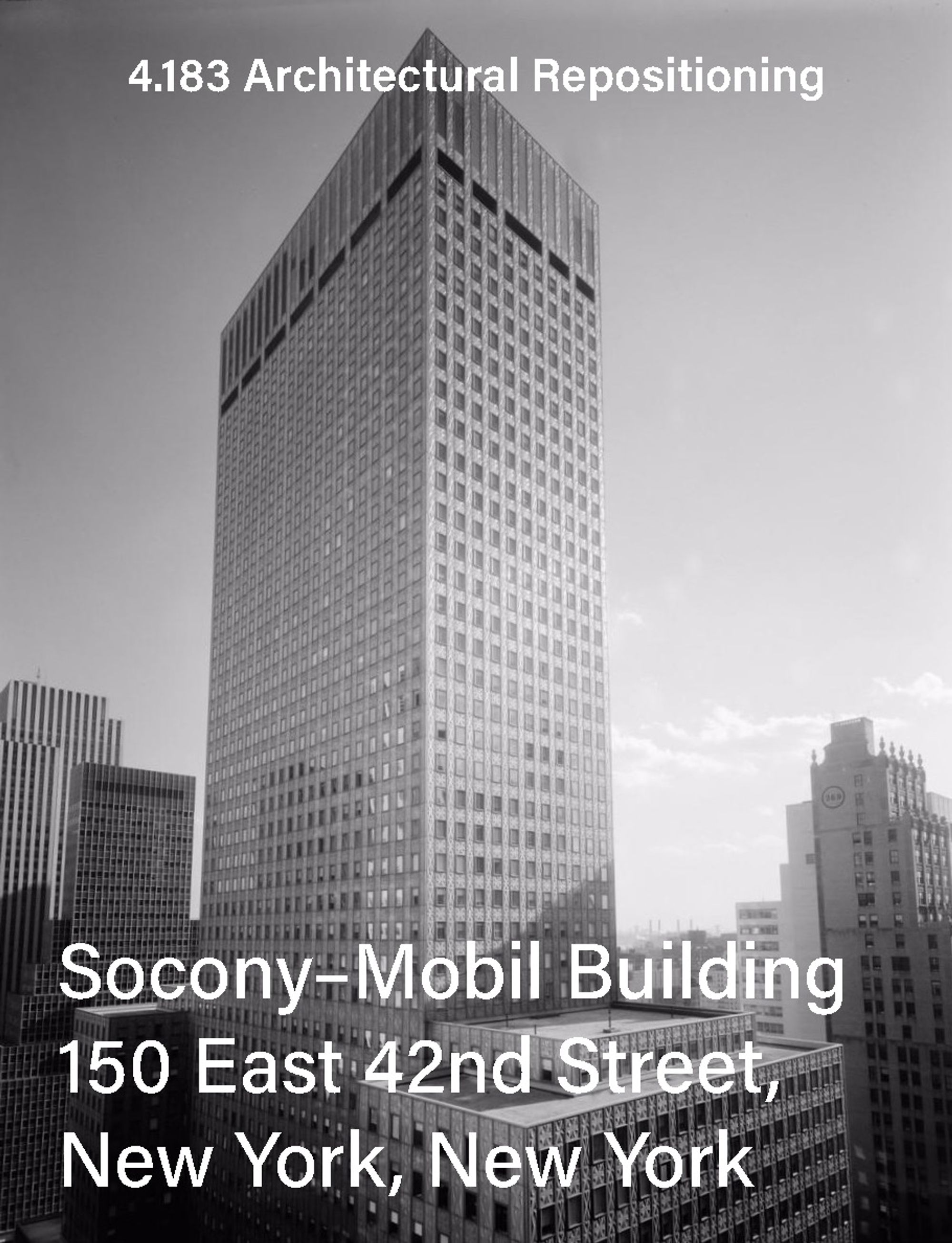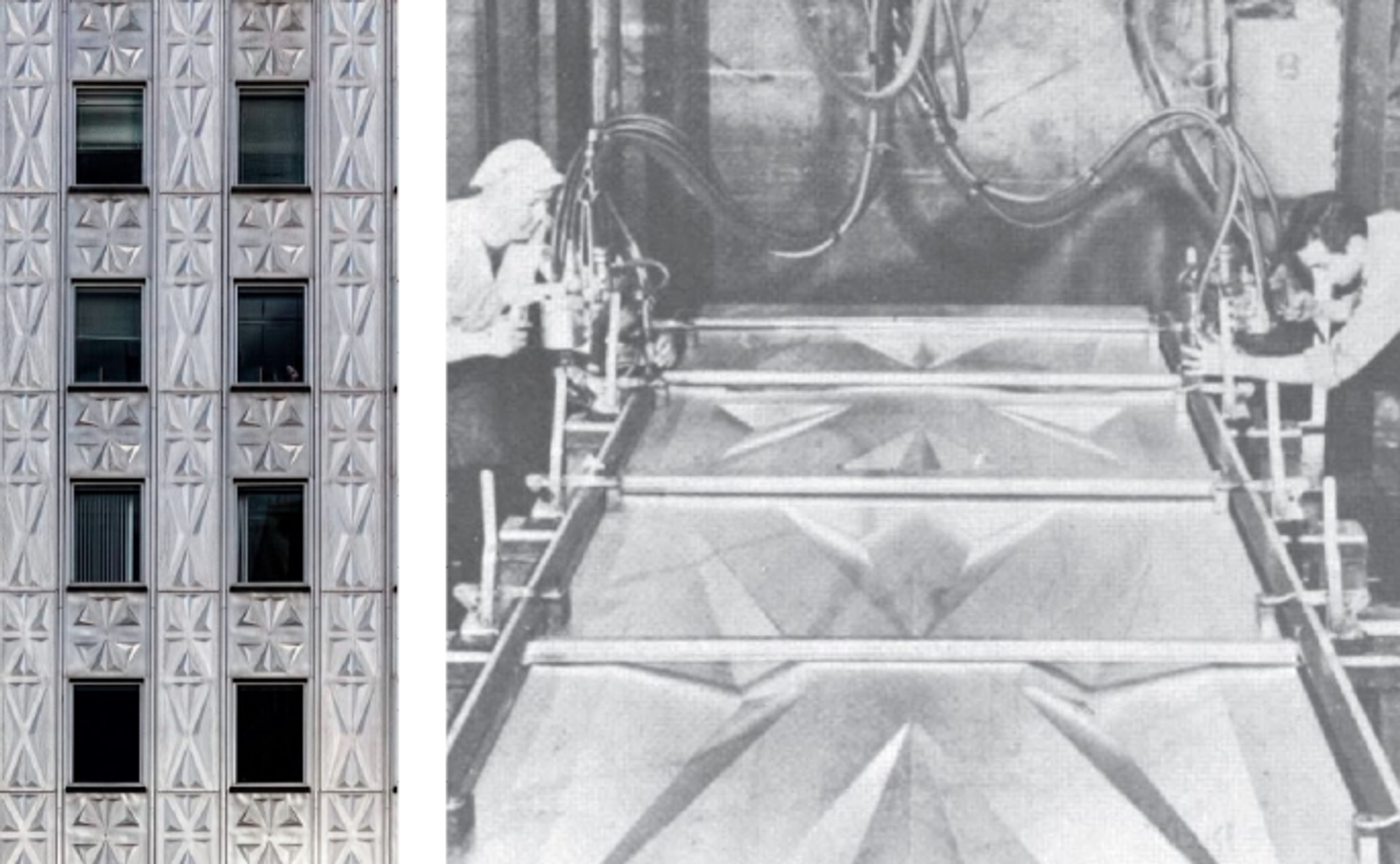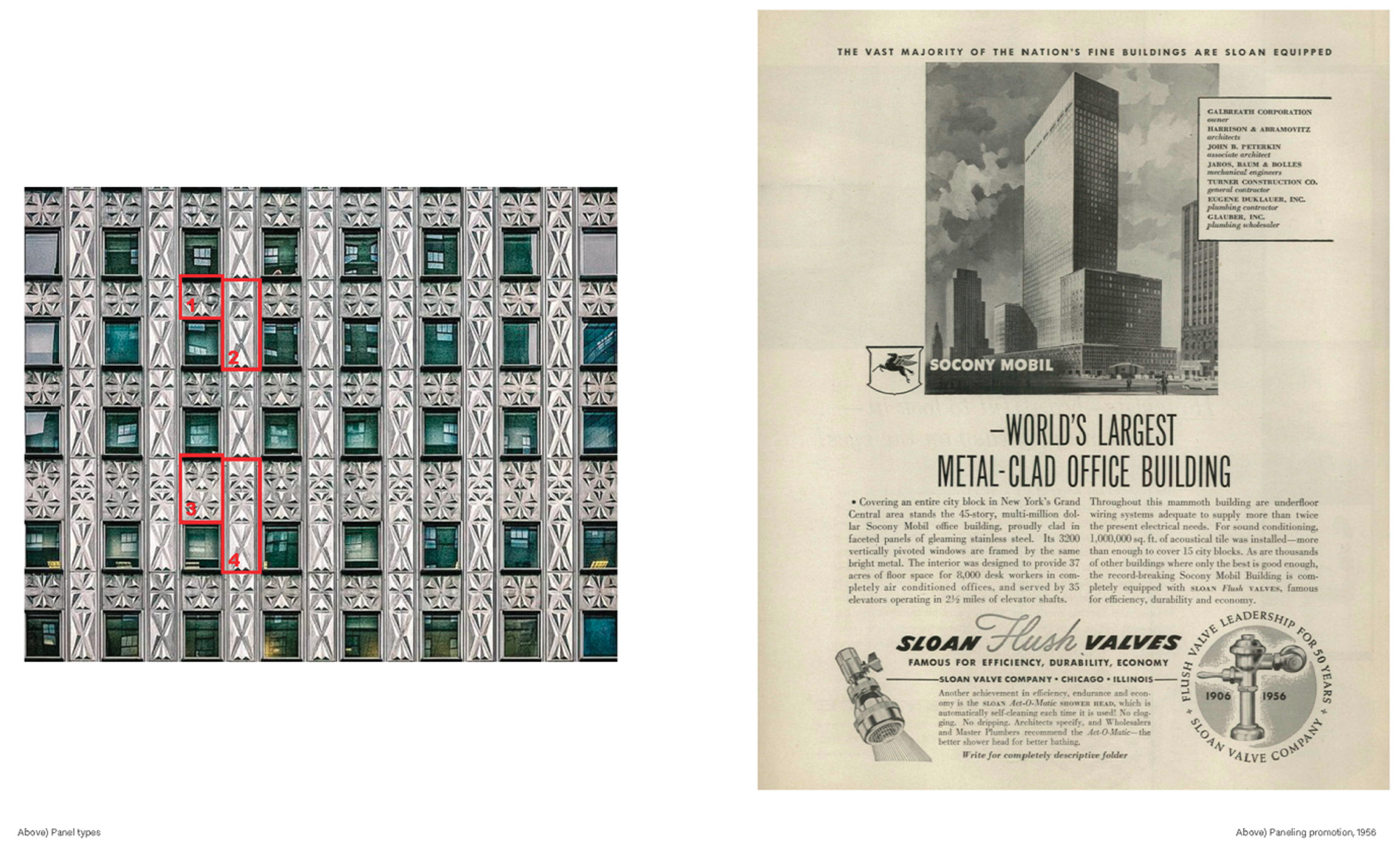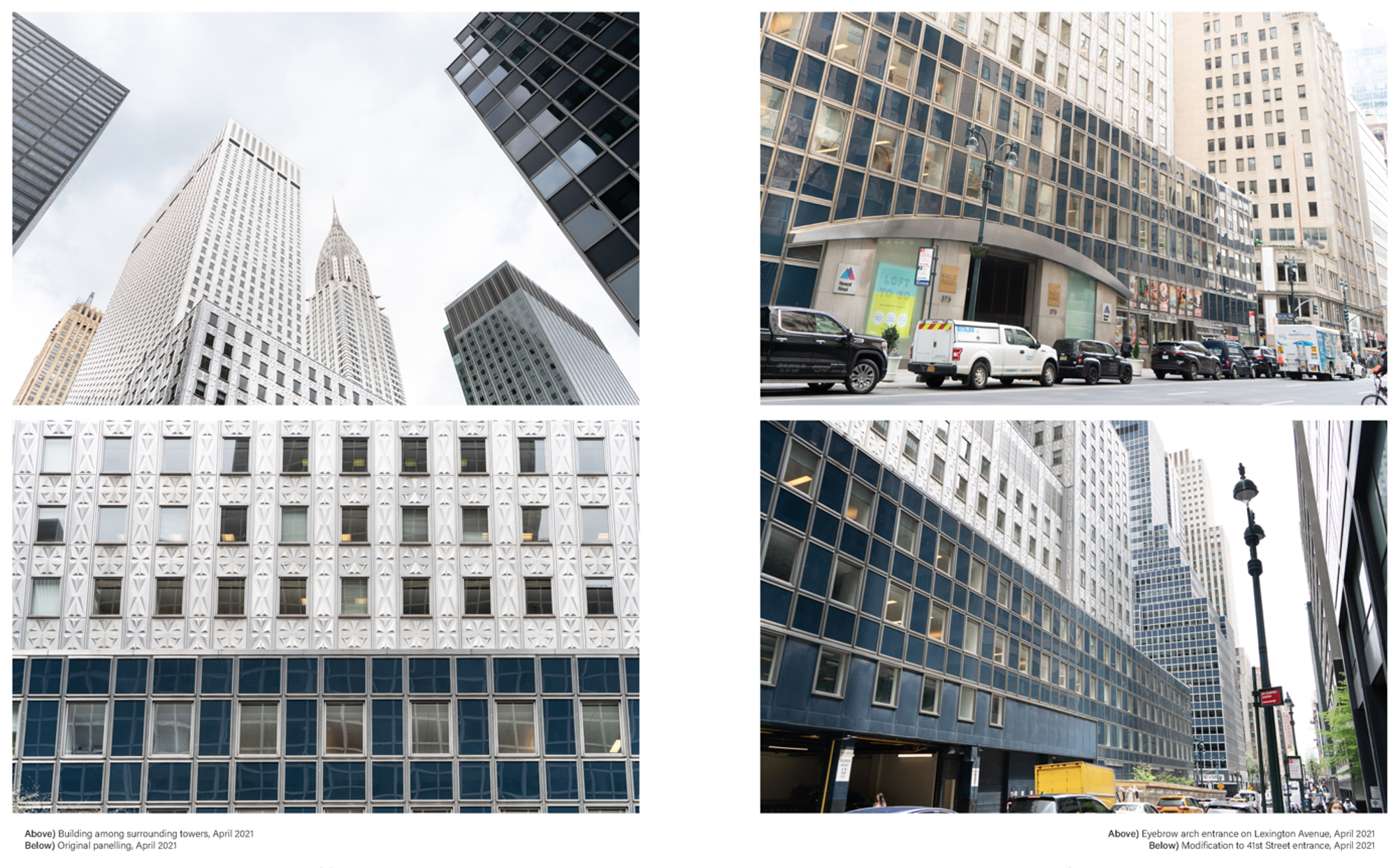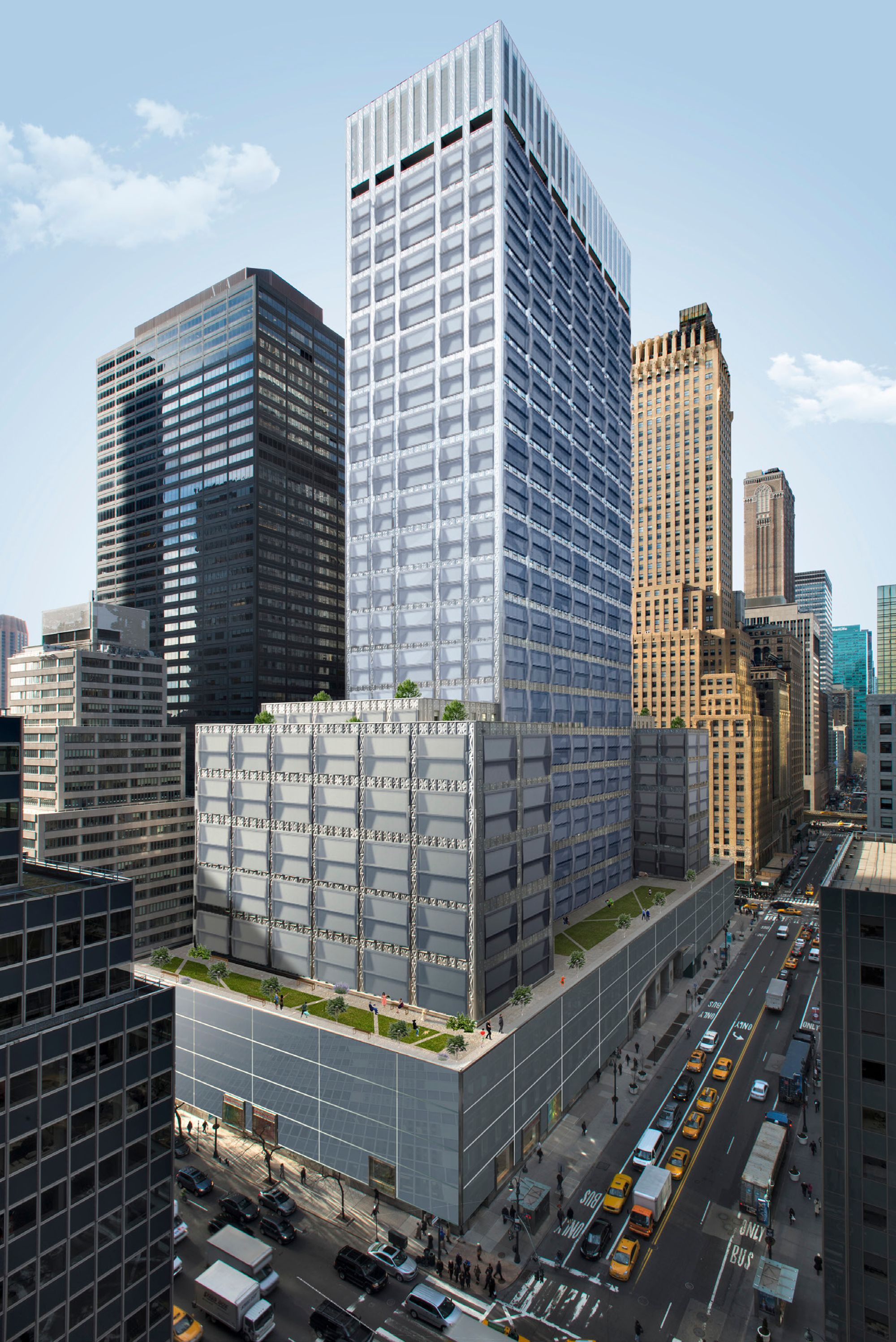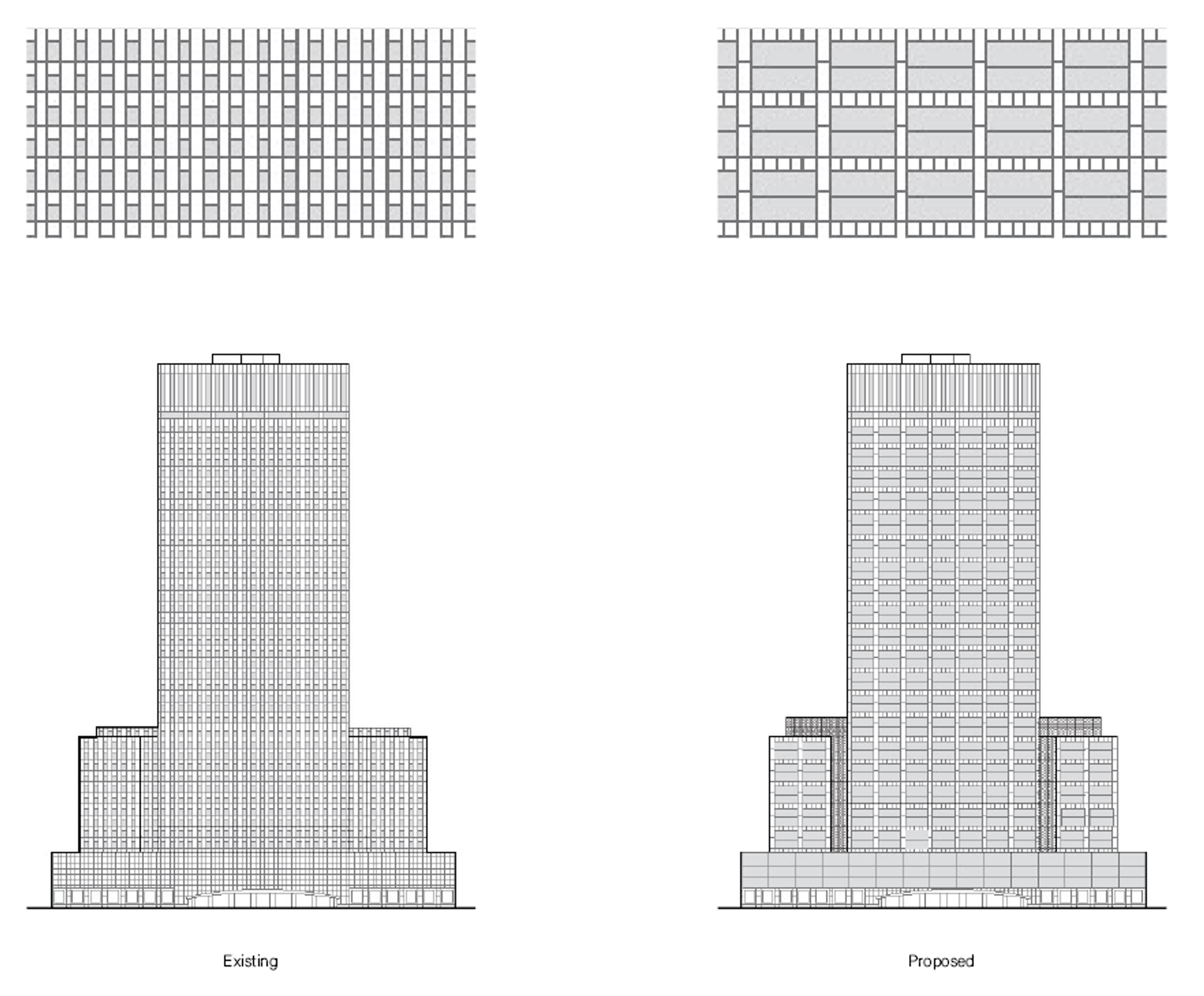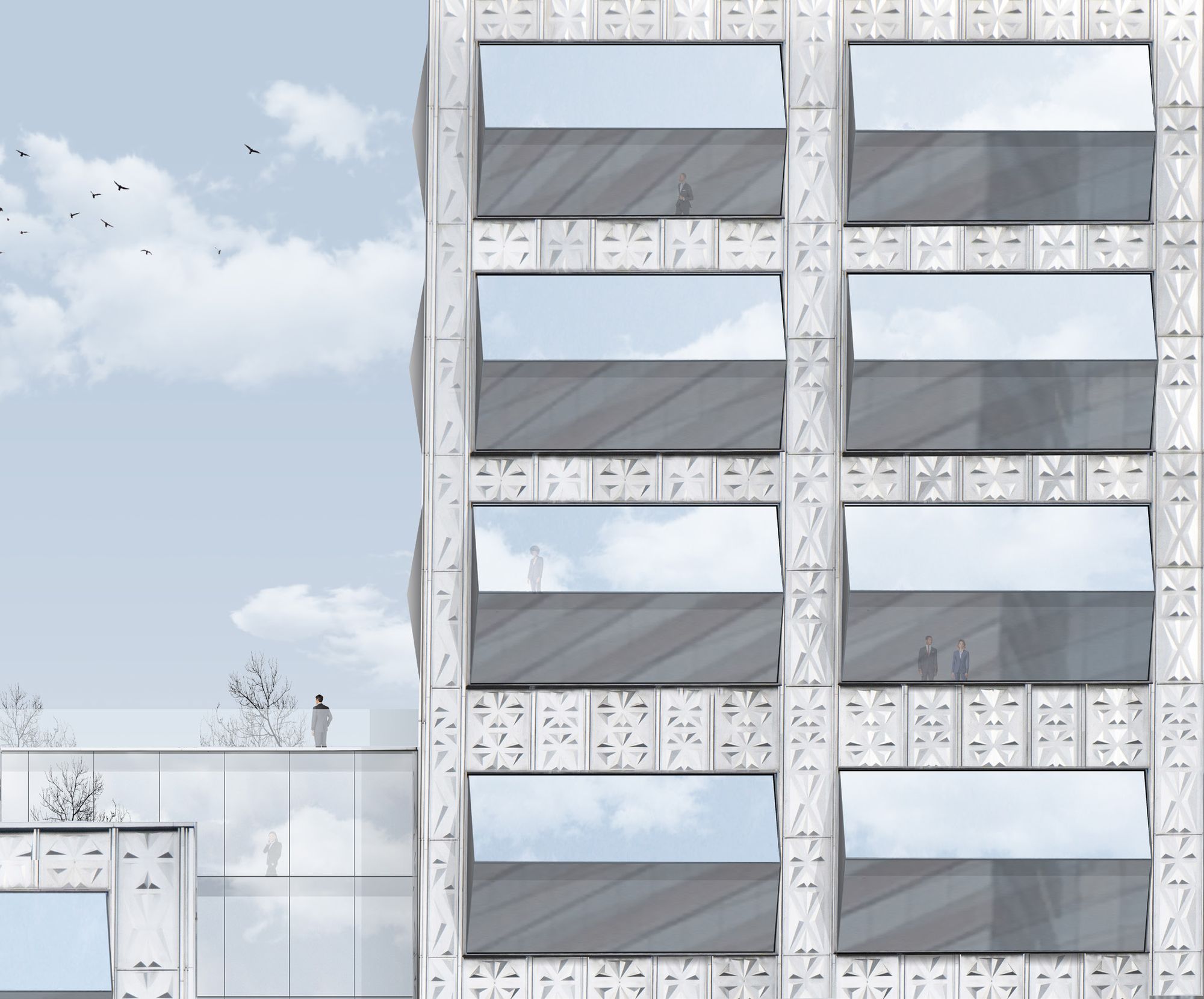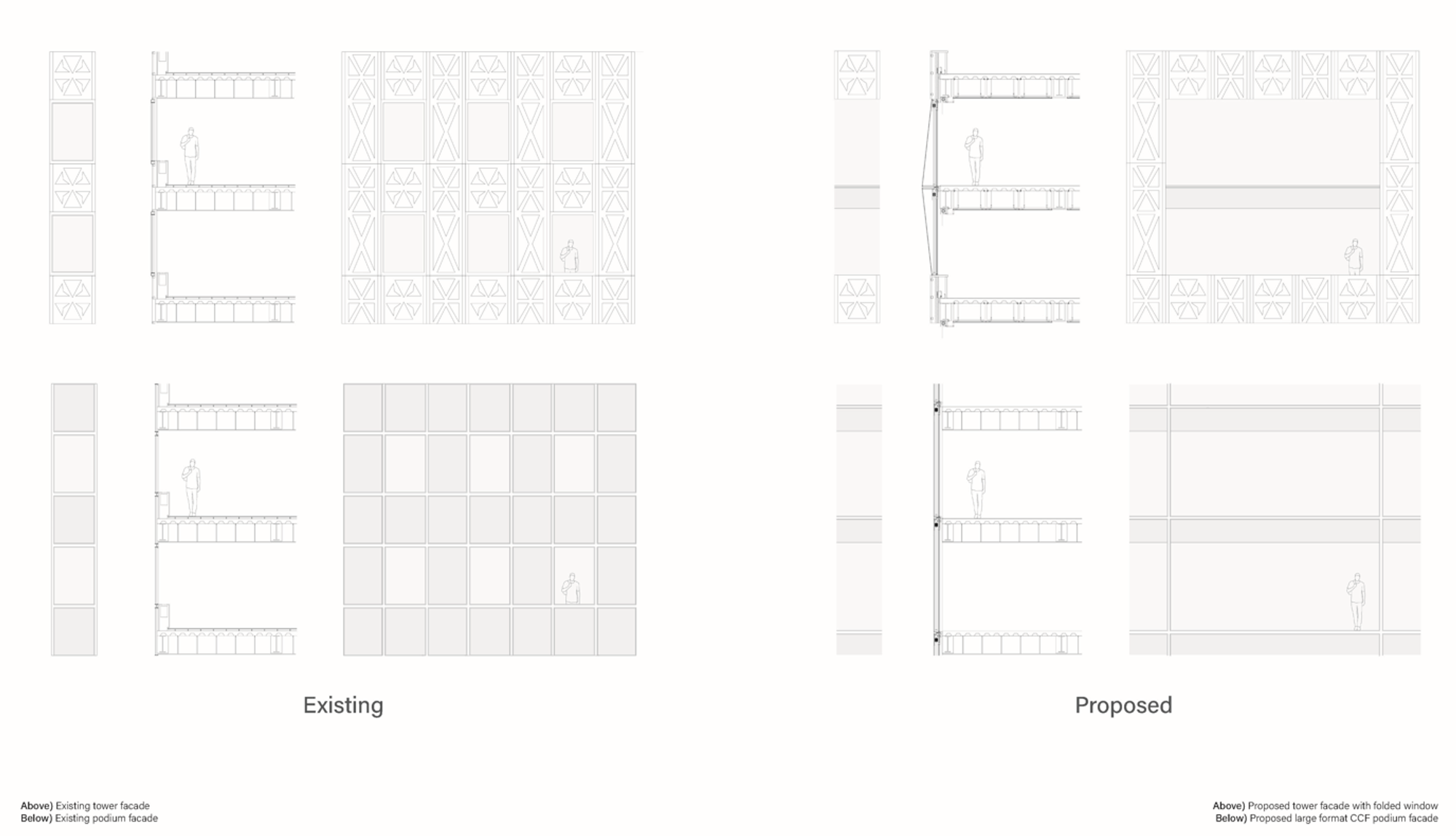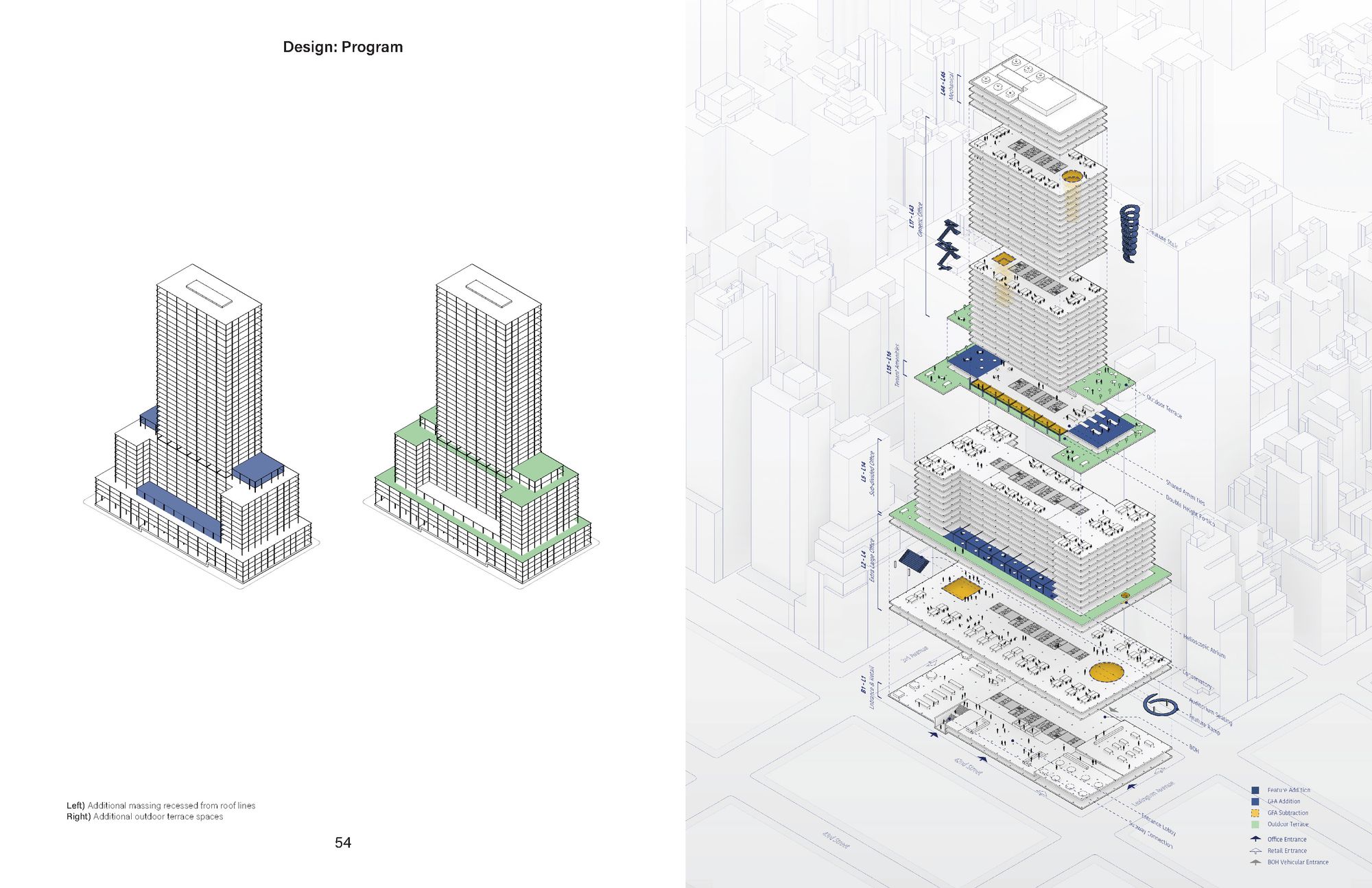𝙋𝙧𝙤𝙟𝙚𝙘𝙩 𝙊𝙫𝙚𝙧𝙫𝙞𝙚𝙬
Repositioning projects typically leave a building’s structure intact, while upgrading its facades, mechanical systems, and interior spaces. This process has the potential to re-establish both the identity and performance of aged real estate assets, simultaneously making them more economically productive and more environmentally friendly. This process is typically 60-70% less costly than demolishing and replacing an existing building, and if appropriately designed it can significantly reduce the carbon footprint of both construction and operational processes.
While repositioning projects can provide an array of benefits to owners, tenants and the environment, the city-wide potential of this movement is currently hampered by the landmarked status of many older buildings. Typically designated as Individual Landmarks by the NYC Landmarks Preservation Commission, the potential of repositioning these buildings is significantly restrained as their exterior appearance is protected. The inability to alter a building’s external aesthetics may preserve a historic value, but this constraint also limits the potential of improving a building’s interior spaces and environmental systems to meet contemporary standards.
In response to these issues, this project explores the possibility of repositioning a landmarked building while considering its historic and cultural value. The building selected for this study is the Secony-Mobil Building which is located on East 42nd Street in Midtown Manhattan and occupies an entire city block between Lexington and 3rd Avenues.
In Collaboration with
Alice Jia Li Song(MIT M.Arch) and Joel Austin Cunningham(MIT SMArchS AD)
𝙃𝙞𝙨𝙩𝙤𝙧𝙮
The Secony-Mobil Building is a 46-story 174m (572ft) tall skyscraper which was completed in 1956. It is comprised of a four-story podium clad in dark-blue opaque glass, upon which a 42-story tower is flanked by two 13-story wings, all of which are wrapped in over 7000 stainless steel panels. Upon completion, Secony-Mobil was the world’s largest air-conditioned building, and it continues to be among the world’s largest stainless-steel-clad skyscrapers. The building was designated a New York City Landmark in 2003. Since its completion the building’s appearance has been met with mixed review, its folded stainless-steel panels drawing a wide array of both praise and critique.
𝙍𝙚𝙥𝙤𝙨𝙞𝙩𝙞𝙤𝙣𝙞𝙣𝙜
The proposal is an assemblage of both preservation and innovation, resulting in a new, but referential, aesthetic for the building. Of primary importance to this process are the building’s stainless-steel panels. In the proposed design, the existing distribution and grid of these panels has been maintained, though some panels have been removed to accommodate larger CCF windows which will allow much more daylight into the interior spaces. These new window bays are two-stories high and span the width of the existing structural grid, while featuring a central fold that references those of the building’s facade panels.
End of Page.

